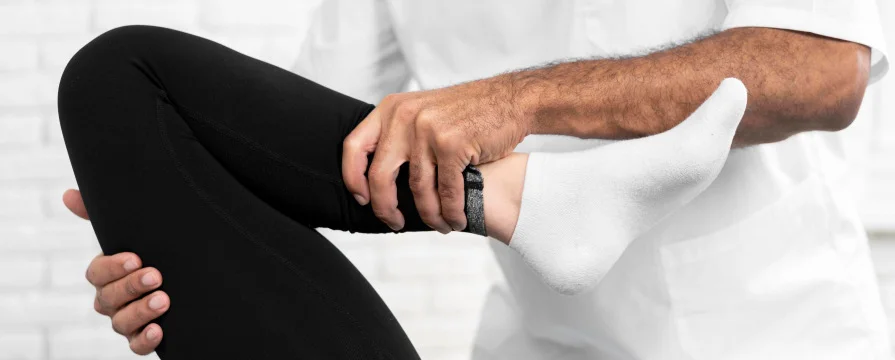Welcome to the Visuals Exercise programme, which is intended to reduce knee discomfort as well as improve your comfort and mobility in general. We will use variety of instructional materials to lead you through series of exercises designed to strengthen muscles surrounding knee joint, increase your range of motion, and encourage better positioning. These exercises will allow you to take charge of your knee health and lead more active lifestyle, no matter whether you have constant knee discomfort or are looking for ways to avoid it. We cordially encourage you to start this path towards less knee discomfort and more functionality with our step-by-step instructions and clear visual examples.
Keeping your knees healthy and flexible overall depends on proper care. It includes variety of actions intended to avoid injuries, reducing pain and improving knee joint strength and suppleness. Knee care includes taking preventive actions to support complex structures of knee, such as including certain stretches and exercises in one’s schedule and making sure one has correct position when engaging in physical activity. Important elements of knee care also include keeping healthy weight, avoiding overuse or excessive stress, and wearing supportive footwear. People can build knee flexibility and be able to perform daily activities with ease and confidence by making these routines priority and paying attention to their bodies’ signals.
Here are the 5 Visuals Exercise that help you to reduce knee pain
1. Quad Sets
Targeting the muscles of the quadriceps, quad sets are easy yet effective workouts that serve to stabilise the knee joint and reduce pain. During these exercises, you should nervous the muscles on top of your thighs by pressing the back of your knee towards the floor while sitting or lying down with your legs extended. Ten to fifteen seconds should pass before releasing this contraction. Do these ten to fifteen times. With each repeat, imagine the muscles contracting and relaxing, concentrating on strengthening and stabilising the area surrounding the knee.
2. Straight Leg Raises
In addition to working the quadriceps, straight leg lifts also work the hip flexors and core, helping to improve knee stability overall. Start by lying on your back with both legs outstretched and bent. Raise the straight leg to the level of the bent knee, pause a moment, and then return it to its original position. Make sure to do controlled motions and appropriate position by repeating each leg for ten to fifteen repeats. Imagine the muscles contracting during every lift, highlighting the need of thigh strengthening in order to support the knee joint.
3. Heel Slides
Heel slides are a great way to get your feet up and increase knee flexibility. As you carefully glide one heel over the floor while lying on your back with both legs bent, try to straighten the leg as much as you can without harming it. Return to the starting position after just a few seconds of holding in the extended posture. For ten to fifteen repetitions on each side, switch between the legs. As you slide your heel, visualise the knee joint moving smoothly and concentrate on expanding your range of motion and flexibility.
4. Seated Knee Extensions
Targeting the quadriceps muscles, seated knee extensions improve knee stability and strength. Placing your feet flat on the ground, take a seat. Stretch one leg out in front of you while attempting to keep the knee as straight as you can. Hold for a short while before lowering the leg back down smoothly. For ten to fifteen repetitions, switch up your legs while keeping your form. Highlight proper positioning and engagement to support the knee joint by visualising the muscles contracting and lengthening with each extension.
5. Mini Squats
Small dives are a type of functional exercise that improve general lower body stability and strengthen the muscles surrounding the knee joint. Place your toes forward and your feet approximately hip-width apart when you stand. Lower your back and slowly bend your knees, as if you were resting on a chair. As you descend, keep your weight in your heels and your chest raised. Return to the starting position while tightening your glutes. Keep your form and balance correct as you repeat for ten to fifteen repetitions.
Conclusion
Visual exercises are highly effective technique to reduce knee discomfort and improve your quality of life. Through use of focused movements and instructional materials, programme gives people ability to take active role in their own recovery or preventative care. Strength, flexibility, and general joint health can all be significantly improved with regularity and commitment to these workouts. Recall that while everyone’s path to pain relief and increased mobility may differ, the rewards are reachable with perseverance and dedication. Accept these workouts as regular routine and allow them to become essential component of more positive and healthful relationship with your knees.




